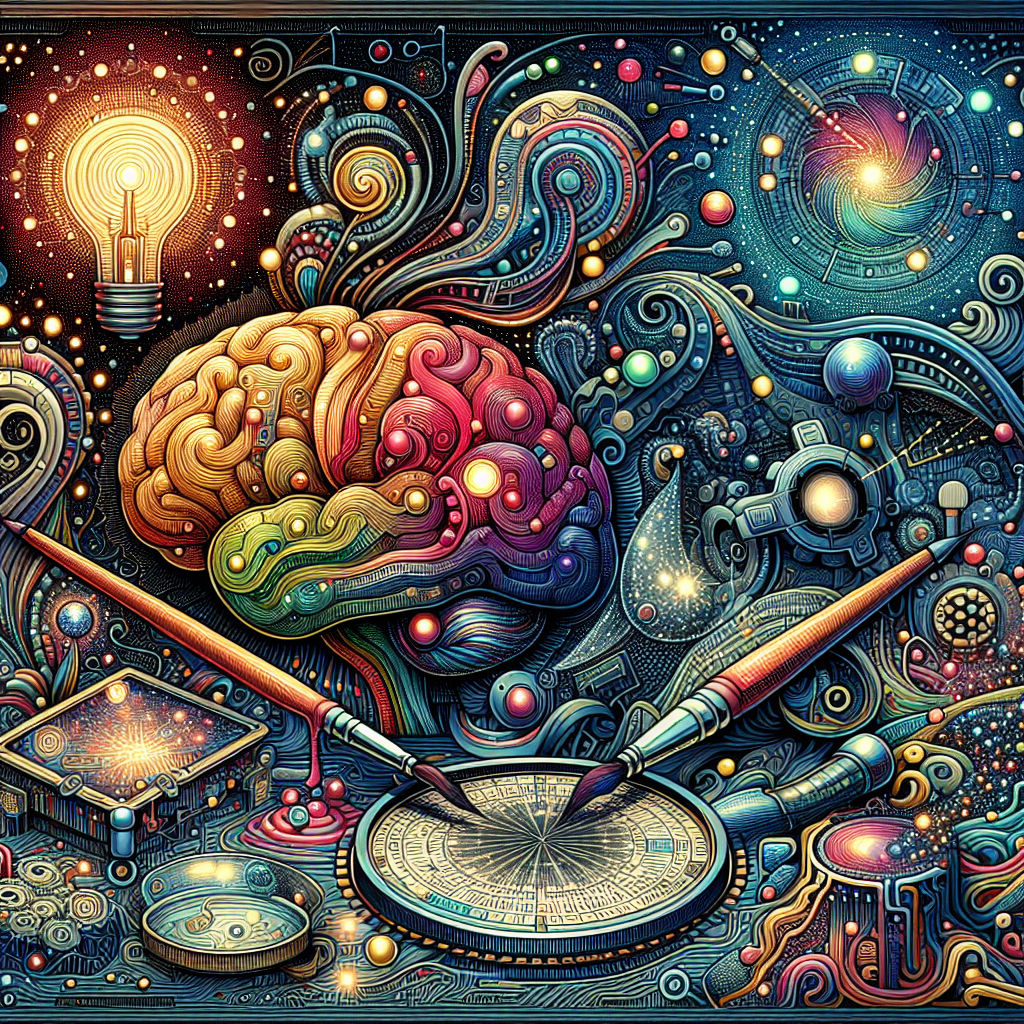In recent years, artificial intelligence has made significant advancements in various fields, from healthcare to finance to transportation. One area where AI has shown promise is in enhancing creativity. Traditionally, creativity has been seen as a purely human trait, but with the help of AI, new possibilities are emerging that could revolutionize the creative process.
AI-enhanced creativity involves using algorithms and machine learning techniques to assist or augment human creativity in various ways. This can include generating new ideas, optimizing designs, or even creating entirely new works of art. By harnessing the power of AI, creators can access a wealth of data and insights that can help them push the boundaries of what is possible.
One example of AI-enhanced creativity is in the field of music composition. AI algorithms can analyze existing music and generate new compositions based on patterns and styles found in the data. This can be a valuable tool for musicians looking to break out of creative ruts or explore new genres. AI can also be used to assist in the production process, helping to generate unique sounds or arrangements that would be difficult or time-consuming for a human to create.
In the world of visual art, AI has also shown promise in enhancing creativity. Generative adversarial networks (GANs) are a type of AI algorithm that can generate realistic images based on input data. Artists can use GANs to create new designs, explore different color palettes, or experiment with textures and shapes. This can help artists to quickly iterate on ideas and explore new possibilities in their work.
AI can also be used to enhance creativity in fields such as writing, design, and even marketing. By analyzing large amounts of data, AI algorithms can identify trends and patterns that humans may miss, leading to new insights and ideas. This can help businesses stay ahead of the competition and create more engaging content for their audiences.
Despite the potential benefits of AI-enhanced creativity, there are also concerns about the impact of AI on the creative process. Some worry that relying too heavily on AI could stifle human creativity or lead to a homogenization of ideas. Others fear that AI could replace human creators altogether, leading to a loss of jobs and a devaluing of artistic expression.
However, many experts believe that AI can actually enhance human creativity by providing new tools and resources for artists to explore. By leveraging the power of AI, creators can access vast amounts of data and insights that can help them push the boundaries of what is possible. AI can also help to streamline the creative process, allowing artists to focus on the more artistic aspects of their work while leaving the more mundane tasks to the machines.
Ultimately, the future of AI-enhanced creativity is still uncertain, but the possibilities are vast. By embracing AI as a tool for creativity, artists and creators can unlock new possibilities and push the boundaries of what is possible in their fields.
FAQs:
1. How does AI-enhanced creativity work?
AI-enhanced creativity works by using algorithms and machine learning techniques to assist or augment human creativity in various ways. This can include generating new ideas, optimizing designs, or even creating entirely new works of art. By analyzing large amounts of data, AI algorithms can identify patterns and trends that humans may miss, leading to new insights and ideas for creators to explore.
2. Will AI replace human creativity?
While some fear that AI could replace human creators altogether, many experts believe that AI can actually enhance human creativity by providing new tools and resources for artists to explore. By leveraging the power of AI, creators can access vast amounts of data and insights that can help them push the boundaries of what is possible. AI can also help to streamline the creative process, allowing artists to focus on the more artistic aspects of their work while leaving the more mundane tasks to the machines.
3. What are some examples of AI-enhanced creativity?
Some examples of AI-enhanced creativity include using AI algorithms to compose music, generate new designs, or create realistic images. AI can also be used to assist in writing, design, and marketing, helping businesses stay ahead of the competition and create more engaging content for their audiences.
4. What are the potential benefits of AI-enhanced creativity?
The potential benefits of AI-enhanced creativity include access to vast amounts of data and insights, new tools and resources for artists to explore, and a streamlined creative process that allows creators to focus on the more artistic aspects of their work. AI can help artists push the boundaries of what is possible and unlock new possibilities in their fields.
5. What are the concerns about AI-enhanced creativity?
Some concerns about AI-enhanced creativity include the fear that relying too heavily on AI could stifle human creativity or lead to a homogenization of ideas. Others worry that AI could replace human creators altogether, leading to a loss of jobs and a devaluing of artistic expression. However, many experts believe that AI can actually enhance human creativity by providing new tools and resources for artists to explore.

